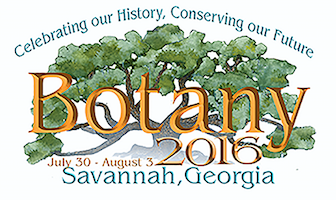| Abstract Detail
Ecology Toski, Daniel [1], Kilgore, Jason Scott [2]. Arboretum trees minimally mitigate emissions by gas and electric utilities in an urban campus. Urban trees sequester atmospheric carbon dioxide (CO2), a dominant greenhouse gas attributed to global climate change, but their relative contribution to mitigating CO2 emissions is not well quantified. Furthermore, as more natural forests are developed, urban forests become a more important resource by storing carbon as biomass. College and university campuses are typically located in urban areas and contain landscape trees, thus they represent a useful resource to quantitatively link carbon sequestration and emissions. Using the Campus Arboretum at Washington & Jefferson College, located in southwest Pennsylvania, we calculated the aboveground biomass (AGB) for every campus tree (n=1200) and measurement period using a generalized allometric equation and more specific equations, when available, based on diameter (DBH). Carbon sequestration rate was calculated as the averaged difference in carbon stock, based on AGB, for each tree, summed across species and the entire campus. Based on species for which specific equations are available, cumulative AGB calculated with the generalized and specific equations differed by only 1.3%, with some species varying up to 57%. Using only the generalized allometric equation, the total AGB in 2015 was 631 metric tonnes (MT), or 230 MT of sequestered carbon, with an annual sequestration rate of 11.5 MT of carbon from CO2. Based on gas and electric utility emissions alone (Jan 2012 – Dec 2015), W & J College annually contributes 16,945 MT of carbon equivalent, which is 1473 times more carbon emissions through these two sources than sequestration by the campus trees. Other emissions sources like vehicles and sequestration sinks, such as turf, soil, and belowground biomass of trees likely have substantial but less important impacts on these results. However, these results should motivate colleges to evaluate their carbon footprint, recognizing that reducing emissions, likely through energy-efficient renovations and new construction, should have the most significant impact on campus carbon dynamics. Increasing carbon sequestration through planting more trees in this urban landscape would also help mitigate carbon emissions and provide other ecological and aesthetic values.
Log in to add this item to your schedule
Related Links:
Campus Arboretum at Washington & Jefferson College
EPA Greenhouse Gas Equivalencies Calculator
Washington & Jefferson College, Washington, PA
1 - Washington & Jefferson College, Environmental Studies, 50 South Lincoln Street, Washington, PA, 15301, USA
2 - Washington & Jefferson College, Biology, 60 South Lincoln Street, Washington, PA, 15301, USA
Keywords:
Carbon sequestration
carbon emissions
campus arboretum
allometric equations
urban trees.
Presentation Type: Poster
Session: P, Ecology Section Posters
Location: Exhibit Hall/Savannah International Trade and Convention Center
Date: Monday, August 1st, 2016
Time: 5:30 PM This poster will be presented at 5:30 pm. The Poster Session runs from 5:30 pm to 7:00 pm. Posters with odd poster numbers are presented at 5:30 pm, and posters with even poster numbers are presented at 6:15 pm.
Number: PEC035
Abstract ID:794
Candidate for Awards:None |



